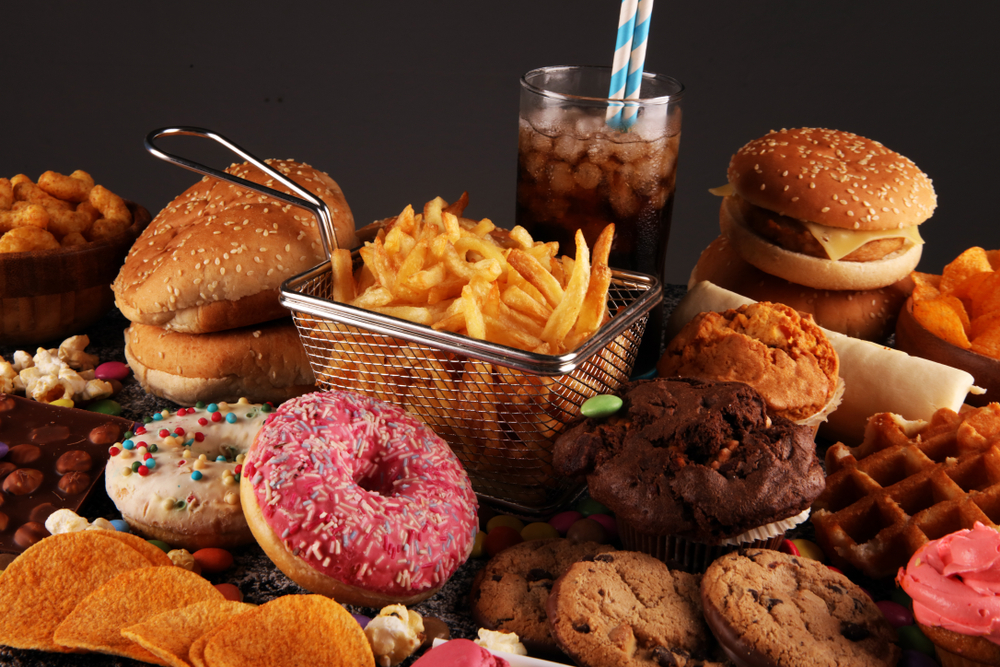According to studies on teenage eating patterns, ultra-processed meals such frozen desserts, prepackaged pastries, and sweets may serve as a “gateway” meal that encourages consumption of additional unhealthy foods.
According to 43% of the teenagers, their intake of ultra-processed foods grew between 2019—the year before pandemic restrictions were put in place—and 2022—the year after they were repealed. 57% of teenagers said they will consume less highly processed food between 2019 and 2022. According to the research, cutting back on certain gateway foods may have an effect on how much total ultra-processed food consumption, which is characterised by high levels of sugar, salt, harmful trans fat, and artificial tastes and colours, is consumed.
Ultra-processed foods such as bread, cereals, desserts, sodas and processed meats comprise more than 60% of the calories Americans eat each day. Previous research has linked high consumption of ultra-processed foods with hypertension, weight gain, increased risk of heart disease and premature death.
“Ultra-processed foods are designed to be hyper-palatable, or engineered to be as addictive as possible,” said Maria Balhara, lead researcher of this study and a student at Broward College in Davie, Florida. “They’re also cheap and convenient, which makes them hard to resist. Most people are eating too many of these foods without realizing it.”
Balhara has a unique perspective regarding adolescent eating behavior: She’s 16 years old, and led the study while dual-enrolled at Broward College while attending Cooper City High School.
Balhara gathered data on how frequently adolescents consumed 12 ultra-processed food products during the previous 8 weeks. Ultra-processed foods included prepackaged cookies, candy, chips, chocolate, energy drinks, frozen desserts, soda, store-bought pastries, store-bought smoothies, syrup-sweetened coffee or tea, white bread and processed meat. Study participants included 315 teens, ages 13-19 recruited from 12 high schools in South Florida between February and April 2022.
Average BMI among participants was 22.8 (indicating normal body weight), and 56% of participants self-identified as white, 25.2 % as Hispanic and 7.6% as Black. In addition, 52.2% of participants identified as female, 41.6% male, 3.2% nonbinary, and the rest did not specify their gender.
Participants completed a survey Balhara developed called the Processed Intake Evaluation (PIE). The survey assessed the frequency of their consumption of the 12 processed foods during the previous 8 weeks in 2022, and questions to gauge their 2022 consumption (after COVID 19 restrictions were lifted) with their estimated consumption in 2019 (before COVID restrictions were implemented).
Also Read: Cravings for fatty foods traced to gut-brain connection: Study
The survey asked the students to report “true” or “false” responses to statements, such as “I often drank soda during the preceding 8 weeks in 2022,” and “I often drank soda prior to the pandemic in 2019.”
Their answers were used to compute a PIE score of 0-100, with 8.33 points given for answers of “often” or 0 points otherwise. Their scores for 2022 consumption were compared to their scores for estimated 2019 pre-pandemic consumption.
Candy, prepackaged pastries and frozen desserts were found to act as a possible “gateway” to drive increased (or decreased) consumption of other processed food products. Teenagers who changed their consumption of these “gateway” foods were more likely to change their consumption of all other ultra-processed foods as well.
Reduced consumption of processed meats was linked to an 8% reduction in consumption of all other ultra-processed foods among study participants. White bread consumption was linked to a 9% reduction in consumption of all other ultra-processed foods, and prepackaged cookies consumption was linked to a 10% reduction in consumption of all other ultra-processed foods.
“For teenagers whose consumption of ultra-processed foods has not yet been established, certain gateway foods such as candy, store-bought pastries and frozen desserts should be avoided, since increased consumption of these foods appears to lead to increased consumption of other processed foods,” Balhara said.
“The good news,” she adds, “is that even small changes, such as reducing how often you eat a few gateway foods, may reduce overall consumption of unhealthy foods and have a big impact on your overall health.”
“I commend Ms. Balhara for her project, which highlights the importance of establishing good dietary patterns early in life,” said Donna K. Arnett, Ph.D., the executive vice president for academic affairs and provost at the University of South Carolina, and a former American Heart Association president.
“The relationship between poor dietary quality and cardiovascular risk factors is well-established. While this is a small, preliminary study, it’s an important topic to continue to investigate and help us understand ways we can influence dietary behaviors to promote optimal cardiovascular health for all ages.”
The study’s shortcomings included the fact that the data was self-reported and that it could not be generalised to all teenage demographics. Additionally, the PIE survey has not been verified, and blood tests to assess the effects of participants’ dietary choices were not included in the study’s health data.

